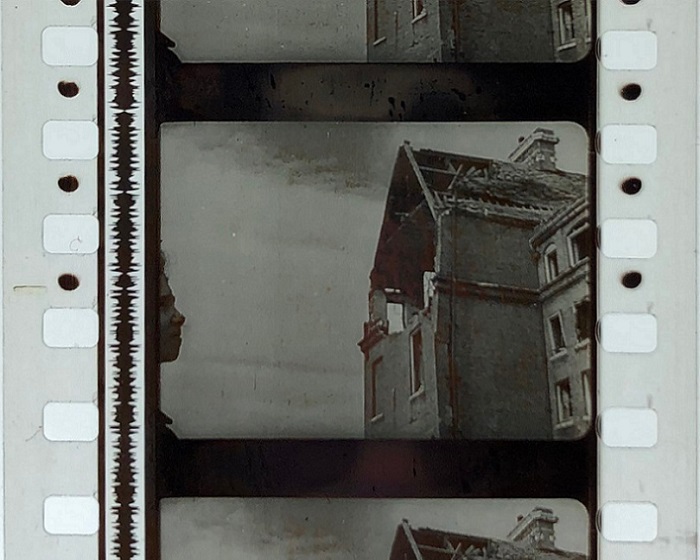| Return home |  |
Return to previous page |
Cropping
If you were to go to a projection booth, pull out a projector’s lens and substitute it with one much longer,
and if you were to pull out the aperture plate completely,
and if you were then to run a reel of a silent film or of an early sound film,
revealing the bottom of the previous frame at the top of the screen and the top of the following frame at the bottom,
and revealing the image all the way out to the sprocket holes on left and right,
you would discover that the size, shape, and positioning changes from shot to shot.
Remember: NOTHING WAS EXACT in those days.
Actually, nothing ever would be exact prior to digital.
The dies for camera apertures and printer apertures and projector apertures varied from one production run to the next.
When projectionists fine-tuned their setups, they did not follow strict guidelines, but just hit a happy compromise.
A silent image could be as squat as .680" or as tall as .750".
A silent image could be as narrow as .906" or as wide as 1".
Some silent images were even wider, going right into the area of the sprocket holes.
It didn’t matter.
So long as the projected image height was not smaller than .679" or maybe a hair smaller and not larger than .705" or maybe a hair larger,
and so long as the projected image width was not smaller than .905" or maybe a hair smaller and nor larger than .940" or maybe a hair larger,
then everything was within the acceptable range.
Similar slop factors carried through for all subsequent formats all the way until the end of film on 17 December 2010.
Because nothing was exact,
when you divide the width by the height, you will seldom arrive at exactly 1.33, but you will get something close to it.
So, both silent and this particular format of sound are more or less the same SHAPE of 1:1.33, give or take a little.
Yet we can see that the silent image is much LARGER than the sound image.
Oh so many people, including university students and film technicians,
think that if the shape is the same, then everything else is the same, too.
I would try to explain that the shape can be the same while the size is different.
A square can be big or a square can be small, but it is still the shape of a square.
The same with a 1:1.33 rectangle.
It can be small or it can be large, but it is still the shape of a 1:1.33 rectangle.
They would all just look at me as though I was crazy.
That is why I want to SCREAM at people.
Now let me show you the same thing in a different way.
Here is that same snippet from a silent.
On the left is the original film.
When the lab adds a music track, the left side of the picture is deleted.
When a cinema showed the film, it would lop off the top and bottom in order to regain more or less the original shape.
The dotted line indicates the four edges of the original image.


